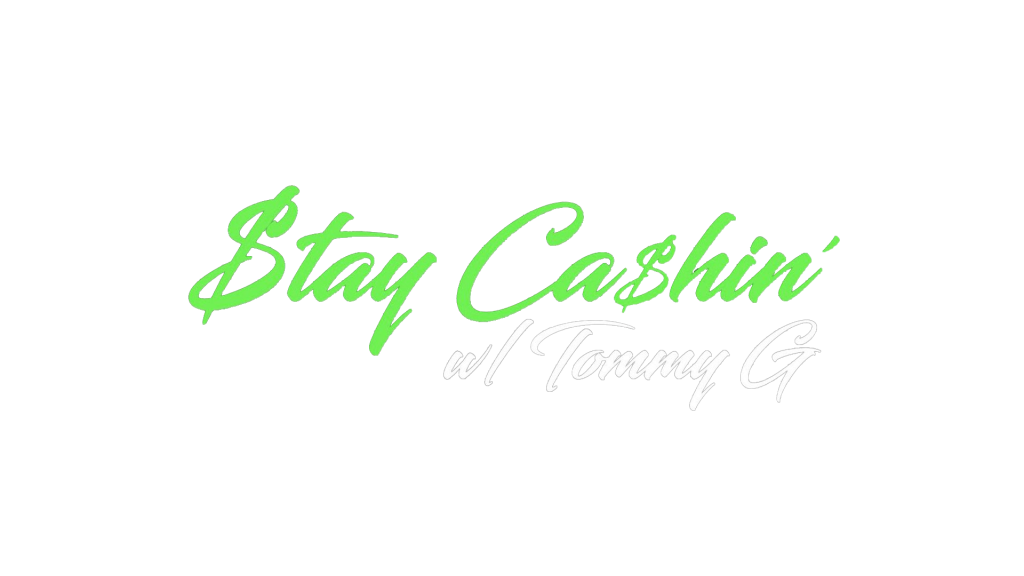Terms You Need to Know:
- Ace: A ball served so well that the opponent cannot make any contact with it
- AD: Short for Advantage, the point after Deuce.
- Ad Court: Left side of the court. When the score is ‘Advantage’, that is where the ball is served from.
- All: Even score. 15-15 is 15 all. 5-5 game score would be 5 all.
- ATP: Association of Tennis Professionals. The Men’s Tour.
- Approach: The shot that is hit by a player right before they come up to the net.
- Australian Open: First Grand Slam of the season in January, in Melbourne, Australia.
- Backcourt: The area near the Baseline, outer edge of the court.
- Backhand: One or Two handed shot, from the left side of a right handed player, or the right side of a left handed player.
- Bagel: Also called a Donut. 6-0 set.
- Ball Boy/Girl: Usually a kid responsible for giving the serving player new balls. Also chase down the balls at the end of points.
- Ball Abuse: Penalty for player getting frustrated and angrily hitting a ball into the crowd, umpires or ball boy. Recklessness with the tennis ball.
- Baseline: The back line that runs parallel to the net and perpendicular to the sidelines.
- Baseliner: Player who prefers to play back behind the baseline. Typically a very good returner with powerful groundstrokes.
- Bounce: How the ball is affected by the surface. Clay, hard, grass etc.
- Breadstick: A 6-1 set.
- Break Point: Point where the returning player has a chance to win a game on the opponent’s serve. Will be one of the following: 0-40, 15-40, 30-40, or 40-AD. Remember, serving players are always listed first when saying the score.
- Call: When the ball goes out of the playing area, the line judge makes a verbal ‘call’.
- Cannonball: Very fast, low, flat serve. Usually an Ace.
- Challenge: When a player does not agree with a line judge’s call, they can request an official review by either the chair judge (during clay season) or Hawkeye (electronic line calling) during the hardcourt seasons.
- Change Over: Player changing sides after every odd numbered game. There is a 90 break to sit down, and change sides of the court.
- Coin Flip: Prior to the start of the match it determines who will serve first.
- Clay: Slowest surface in tennis. Dirt Surface, usually red or green. The Grand Slam associated with this surface is the French Open.
- Default: Series of code conduct warnings in which a player is disqualified by the chair umpire.
- Deuce: Game score of 40-40, or 40 all. Tied.
- Deuce Court: The right side of the court, when the score is deuce that is when the ball is served from.
- Dig: Type of shot where a player picks the ball directly off the ground from an opponent’s drop shot. “Dig it out”.
- Double Fault: Server failing to get either one of their serves to land inside the service box. Server loses the point.
- Doubles: 2 on 2 matches, 4 players total.
- Drop Shot: Softly hit slice with a lot of backspin that barely lands over the net.
- Error: When the tennis ball does not land in the opponent’s court after it has been hit. Stat is tracked as Unforced Errors.
- Fault: Served ball that does not land in the correct service box.
- Flat Shot: Shot that generally doesn’t have an arch. More of a line drive, resulting in less/low bounce that takes reaction time away from the opponent.
- Foot Fault: Infraction called against the server for stepping on or over the baseline with either of their feet during a serve.
- Forehand: Ground Stroke used with the player’s dominant hand. Shot coming from the right side of a right handed player, and a shot from the left side coming from a left handed player.
- Frame Shot: Ball hits the racket’s frame instead of the strings. Causes wild shots that usually stray off court or into the crowd.
- French Open: Second Grand Slam of the season at the end of May in Paris, France.
- Game: Individual piece of a set where one player or side wins 4 points and is 2 points ahead of their opponent, or has won 2 consecutive points after deuce.
- Game Point: Whenever the server is leading and needs one more point to win the game. Game Points would be 40-0, 40-15, 40-30, AD-40. Remember, serving players are always listed first when saying the score.
- Grass: Fastest surface in tennis. 4 week portion of the schedule in the middle of summer culminating with Wimbledon in England.
- Grand Slam: The Four Major Tournaments on the tennis calendar. Australian Open, French Open, Wimbledon, and the US Open.
- Ground Stroke: Any shot made after the ball has bounced, either a forehand or a backhand.
- Hardcourt: Medium speed surface. Faster than the clay but not as quick as the grass. Makes up more than 50{7cfdf048d63d1634c4ebc39e44c17f1aa9d4d8c4f009b1c668289627fc77fa83} of the tennis schedule (beginning and end).Two Grand Slams are associated with hardcourts; The Australian Open and The US Open.
- Half-Volley: Shot made by immediately hitting the ball after it hits the ground, low on the short hop.
- Hawkeye: Electronic line calling technology that has become standard in recent years. No Hawkeye for the clay season, but very effective for hardcourt.
- Junk Ball: A ball that is hit slow without much spin is referred to as a junk ball. In baseball terms it would be like hitting a changeup at your opponent.
- Kick Serve: Serve with a lot of topspin. Serve bounces very high, and usually to the wide side of the court.
- Let: Point that is replayed because of netcord interference. The ball is served and clips the netcord and still lands in the service box.
- Lob: A shot that lifts the ball high into the air. Usually played from the back or deep corners of the court to allow the player to get back into a defensive position.
- Love: Means Zero. 0.
- Match: The overall contest.
- Mini-Break: Term used for winning a Point on an opponent’s serve during a Tiebreaker.
- Moonball: Very high arcing shot over the net that lands near the opponent’s baseline. Similar to a lob, but more topspin.
- Net: Divides the court in half, and is higher on each end than it is in the middle.
- Net Point: While approaching the net, a point won or lost is called a Net Point.
- Net Cord: Cord that runs along the top of the tennis net. The ball will hit it and either jump over, or fall dead.
- No-AD: Doubles scoring where there are no deuce-advantage points. Once the game gets to deuce, the very next point determines the game.
- No Man’s Land: Term used for the area between the Service Line and the Baseline.
- Out: A ball that lands outside of the court’s boundary.
- Overhead: A shot made with the racket above the head, resembling an overhead serve.
- Painted: Also called Dotted. When a player hits a shot that lands on or very near the lines of the court, without going out.
- Pass: Also called a Passing Shot. Passing Shots are a stroke made while the opponent is up near the net, and has to be hit hard enough to get past them, but also has to land in court.
- Plus One: Or +1. Indicates the server won the point on the next shot after the returner successfully returned the serve.
- Point: Smallest unit of scoring. Each individual serve starts with a point. The point ends when the ball either is hit and not returned, lands out, or does not clear the net.
- Qualifier: Player who reaches the main draw of a tournament through pre-tournament matches.
- Racket Abuse: When a player hits or throws their racket in frustration or anger.
- Rally: Series of shots after the serve by both players, back and forth.
- Returner: The player who is receiving or returning the serve.
- Return Ace: When the returner hits a one shot winner back off of the serve.
- Seed: Ranking in a tournament. High seeds do not play other high seeds early on in tournaments.
- Serve and Volley: Combination where the server serves the ball out wide and then immediately charges the net to take advantage of the opponent’s poor court positioning.
- Server: The player who is currently starting each point.
- Service Box: Rectangular area diagonally across the court from where the server stands. Where the ball is supposed to land before being returned.
- Service Break: A Service Break is winning a game on your opponent’s serve. In football terms, a Break would be like scoring a touchdown. Breaks are absolutely critical to winning matches.
- Service Hold: A hold is winning a game that you are serving. Players are expected to hold their own serve. In football terms, holding serve would be playing defense and forcing your opponent to punt the ball.
- Service Line: Line at the back of the court where the server stands when performing a serve.
- Set: Mini match within the main match. 3 or 5 sets make up a full match. At least 6 Games must be won with a 2 Game lead, or 6 Games won and a 7 point Tiebreaker after 6-6.
- Set Point: When a player only needs one more point to win the set.
- Slice: Shot that creates backspin on the tennis ball, causing it to stay low off the bounce.
- Smash: Hard overhead shot, usually without the ball hitting the ground first.
- Spin: Rotation of the ball.
- Stroke: Hitting the ball with the racket, short for ground stroke.
- Tiebreak: 7 or 10 point game to decide the outcome of a set. First player serves for a point, and then the other player gets to serve for two points. Serving alternates every other point after that. Tie-breaks must be won by 2 points.
- Topspin: Forward rotation of the ball that causes a curving, or diving effect on the ball. Effective for trying to hit corners and lines.
- Tweener: Shot made by hitting the ball between your legs. Usually made when running with the player’s back to his opponent.
- Umpire: Main referee in the match. Sits in the chair at the net and can overrule all line judges.
- US Open: Fourth and final Grand Slam of the season, in New York City.
- Volley: While in play, a stroke is made by hitting the ball before it hits the ground. Usually done close to the net.
- Walkover: When an opponent does not show up to the match due to injury.
- Wimbledon: Third Grand Slam of the season at the end of June, beginning of July in England.
- WTA: Women’s Tennis Association. The Women’s Tour.
Post Views: 364




